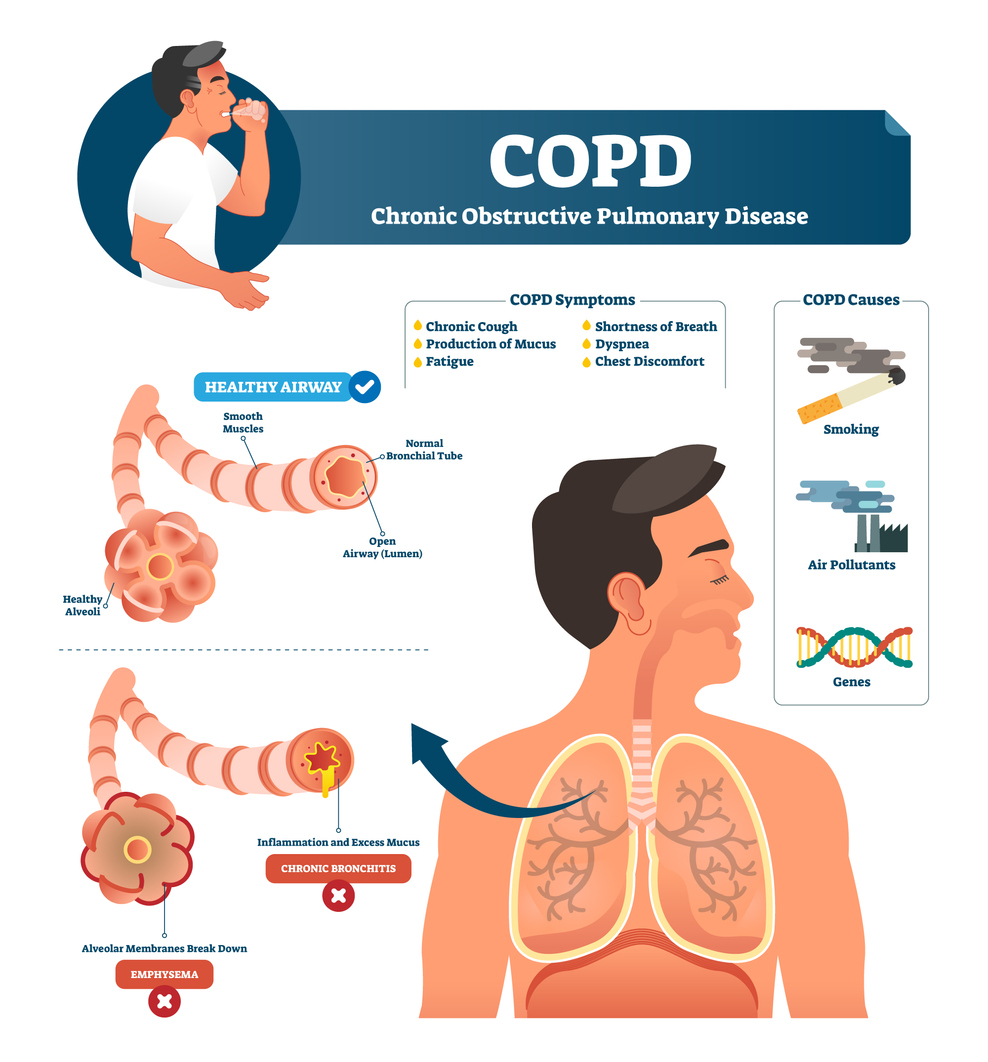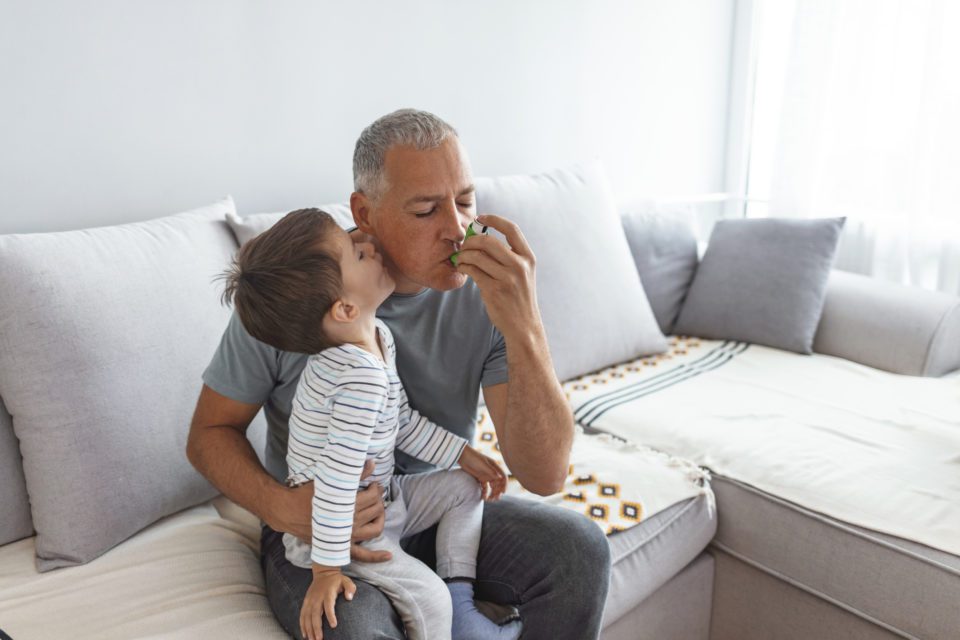


Learn more about the chronic inflammatory lung disease that affects more than 16 million Americans
What Is Chronic Obstructive Pulmonary Disease?
Chronic Obstructive Pulmonary Disease (COPD) is the third leading cause of death in the United States. COPD refers to conditions that affect the lungs and make it difficult to breathe. The two main conditions are chronic bronchitis and emphysema. Chronic bronchitis is when the lung’s airways are inflamed and full of mucus. Emphysema is when the air sacs in the lungs are damaged. There is no cure for COPD but with proper diagnosis and treatment people can feel better, stay active, and slow the progression of the disease.

Diagnosis & Symptoms
A spirometry test is the most common method to diagnose COPD. It is a simple test to check how much air you can breathe in and out of your lungs. Doctors will order this test when the following symptoms are present: chronic coughing, shortness of breath, mucus or phlegm in the lungs, trouble taking a deep breath, and wheezing.
Risk Factors
Exposure to irritants that damage your lungs and airways can cause COPD over time, which includes chronic bronchitis and emphysema. About 85 to 90 percent of COPD cases are caused by smoking, but nonsmokers can get COPD too. Here are other risk factors: people with a history of asthma, a genetic condition called Alpha-1 deficiency, working with chemicals, dust and fumes, people over 65 years of age, people with a history of asthma, breathing secondhand smoke, and people with a history of asthma.
Treatment & Management
COPD treatment can decrease the frequency and severity of symptoms. The treatment plan will include pulmonary rehabilitation, which can include: weekly sessions of breathing techniques, avoidance of smoking and other air pollutants, exercise training to strengthen the muscles used for breathing, medications, healthy eating and exercise, counseling to decrease anxiety and stress, and use of supplemental oxygen.
COPD Management during the COVID-19 Pandemic
During this unsettling time of the COVID-19 pandemic, anybody with COPD or any other medical conditions will have to take extra precaution and follow all the guidelines to minimize your risk of infection. There is currently no vaccine available. While some of our communities have taken the steps to reopen, it does not mean the virus is gone. It is recommended to continue taking COPD medications as normal. If you are experiencing constant flare-ups, you are encouraged to call your physicians to discuss a new treatment plan. On the other hand, it is still a good idea to stay connected with family and friends for your emotional health.
For more information, please visit…
- https://www.cdc.gov/copd/basics-about.html
- https://www.nhlbi.nih.gov/health-topics/education-and-awareness/copd-learn-more-breathe-better/copd-awareness-month#:~:text=With%20early%20diagnosis%20and%20treatment,of%20life%20and%20breathe%20better.
- https://www.lung.org/lung-health-diseases/lung-disease-lookup/covid-19/chronic-lung-diseases-and-covid
